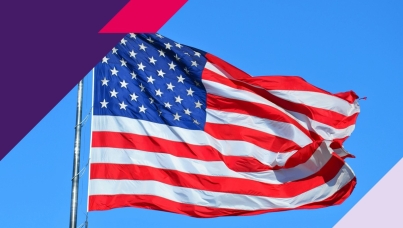Ipsos Op-Ed: Testing the Limits: Why Trump Pulled Back on Tariffs
The below op-ed was originally published in Valor on April 21, 2025, in Portuguese. Below is the translated version of the op-ed in English.
By: Clifford Young, President, Ipsos
Donald Trump is back in the White House—and tariffs are back on the table. The initial rollout was bold: sweeping new import taxes aimed at asserting strength and economic nationalism. But just as quickly as they were announced, many of the measures were dialed back. It didn’t come with much fanfare. No big speech. No policy reversal. Just a quiet recalibration.
For some, it looked like chaos. But for those paying attention, it looked familiar: Trump testing the limits—and feeling the pushback.
He’s done this before. Trump often leads with force, but he rarely plows through without sensing where the resistance lies. He doesn’t operate from briefing books or policy playbooks. He operates on instinct—a kind of political spidey sense. And lately, that instinct has been warning him to slow down.
The resistance came from multiple fronts. Public opinion, yes—but also from elite decision-makers and financial markets, where concerns about inflation and supply chain disruption triggered alarm. There were rumblings from CEOs, editorial pages, and Capitol Hill. And in the background, the bond market stirred—a subtle, but powerful sign that pushing too hard could carry real economic consequences.
Trump may not always listen to experts, but he knows when the ground is shifting beneath him. His recent tariff pullback was a signal: the pressure had built up, and he felt it.
The numbers make that pressure visible.
Despite the populist appeal of tariffs, they are broadly unpopular. In recent Ipsos polling, fewer than one-third of Americans support a generalized tariff regime. The very word “tariff” now evokes inflation, higher costs, and economic pain. Americans may want to punish trade cheaters, but they don’t want to pay more at the register to do it.
And there’s a deeper fatigue. Only 49% of Americans agree that “things will get worse before they get better.” That’s not just a reflection of pessimism—it’s a ceiling on pain tolerance. The American public wants protection, not sacrifice. Any policy that threatens to introduce widespread discomfort hits a wall.
Inflation remains a particular pressure point. Even modest price increases can have political consequences. Historically, a two-point rise in inflation correlates with a four- to six-point drop in presidential approval. With inflation still fresh in the minds of voters, and Trump’s approval hovering in the mid-40s, there isn’t much room for error.
But there’s an important caveat: Republicans remain resilient. When tariffs are presented not as abstract economic policy, but as punishment against “bad actors,” the picture changes. Seventy-five percent of Americans support tariffs against countries they believe are behaving unfairly, with China clearly at the center of that narrative. Among Republicans, support is even stronger.
This is the lane that remains open—a narrow path where action looks like justice, not pain.
So Trump did what he often does. He pushed hard, met resistance—from the public, from elites, and from the markets—and quietly pulled back. Not retreat—reflex. His instincts told him the ground was soft.
That instinct has kept him afloat in past political storms. And if recent moves are any indication, it’s still active now.
But this is only one moment. The pressures will continue to mount—economic, political, and psychological. And Trump, as always, may pivot again. Maybe he finds a second wind. Or maybe the limits hold. For now, it appears he’s pulled back. Only time will tell if he stays there.


